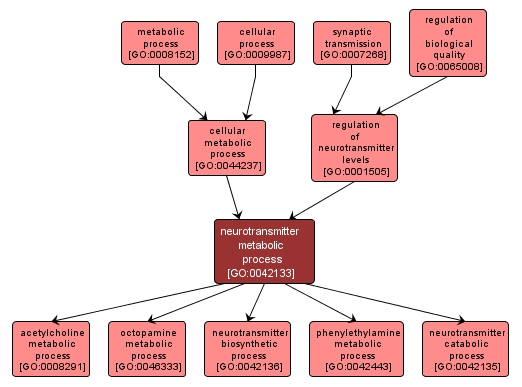| Desc: |
The chemical reactions and pathways involving neurotransmitters, any of a group of substances that are released on excitation from the axon terminal of a presynaptic neuron of the central or peripheral nervous system and travel across the synaptic cleft to either excite or inhibit the target cell. |














